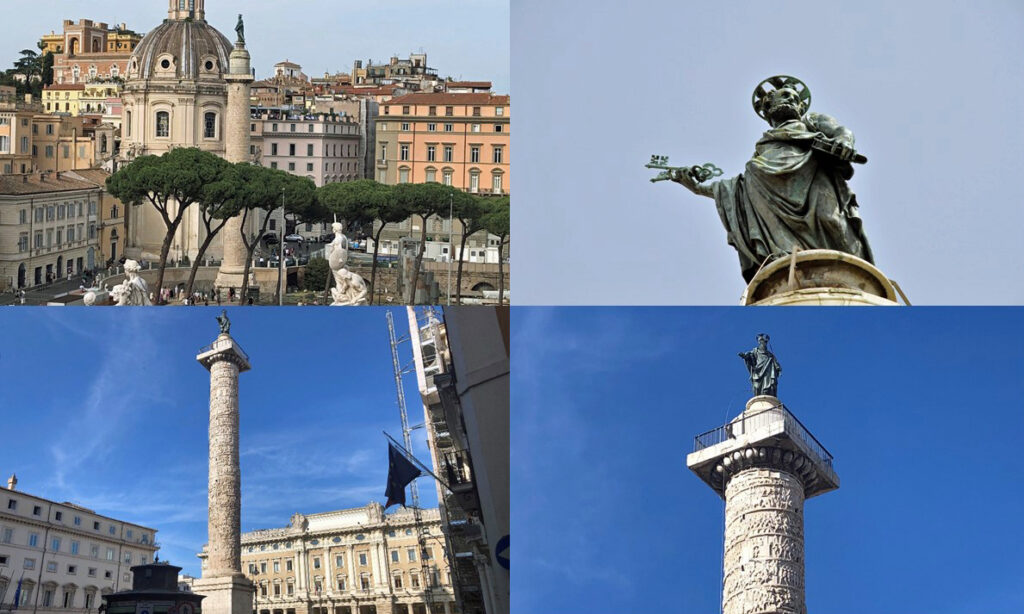Today, in the continuing series about Rome, we look at two very similar columns, honoring both Roman and Christian heroes.
In 106 A.D., Roman Emperor Trajan defeated the Dacians, capturing territory north of the Danube River in what are now parts of Romania and Serbia. The Roman Senate ordered construction of a victory column just north of the Roman Forum. When completed in 113, the column, constructed from 20 hollow marble drums, each weighing 65,000 pounds, was 115 feet tall. A unique spiral staircase inside led to a viewing deck below a bronze statue of Trajan. A 620-foot-long frieze winding 23 times around the exterior related the story of Trajan’s victory, which could be studied from libraries flanking the column. Early in the later reign of Emperor Marcus Aurelius, Germanic tribes invaded areas controlled by Rome, including areas conquered by Trajan. Between 166 and his death of unknown causes in 180, Marcus Aurelius and his troops repelled the invaders. In recognition of his victories, the Roman Senate ordered a 130-foot-tall column, largely mimicking Trajan’s column, to be built in what is now Piazza Colona. The most important differences from Trajan’s Column were the use of larger and more visible forms on the encircling frieze describing the military exploits, enabling its interpretation from ground level, and a bronze statue of Marcus Aurelius at the top.
At some time during the middle ages, the statue of Trajan disappeared from his column. In 1587, Pope Sixtus V ordered Trajan’s the column be topped by a bronze statue of St. Peter, one of Rome’s two patron saints. The following year, he ordered that the column of Marcus Aurelius be topped by a corresponding statue of St. Paul, Rome’s other patron saint. Amazingly, Rome’s ancient twin columns still stand tall and erect, although their internal staircases are no longer useable.
